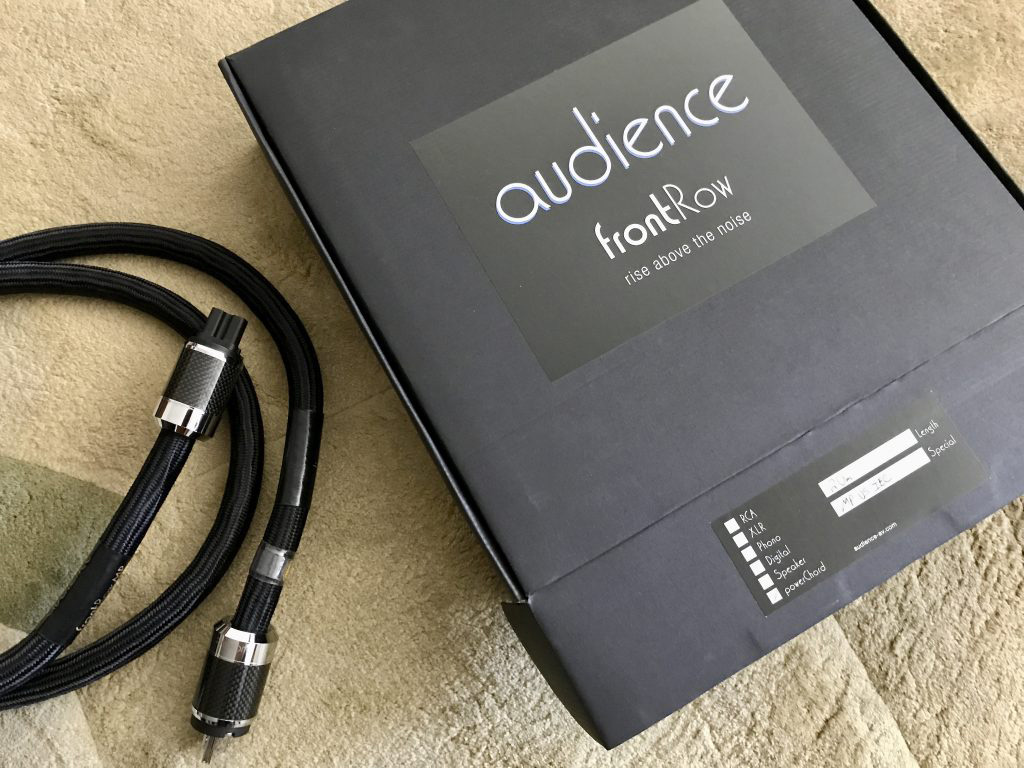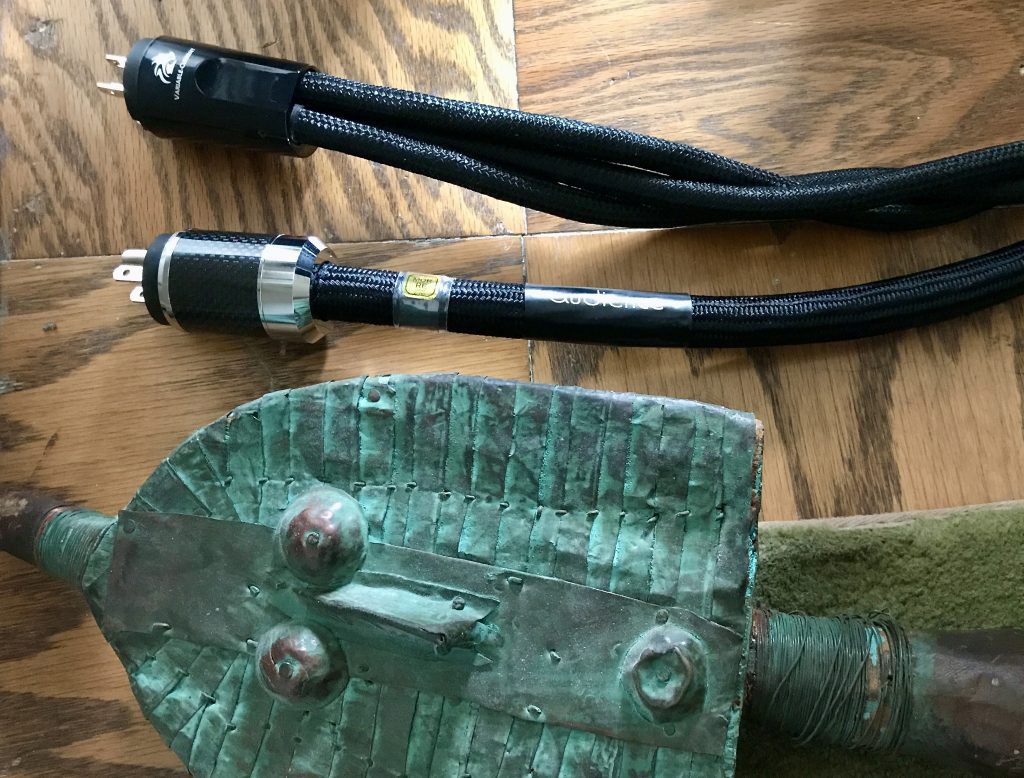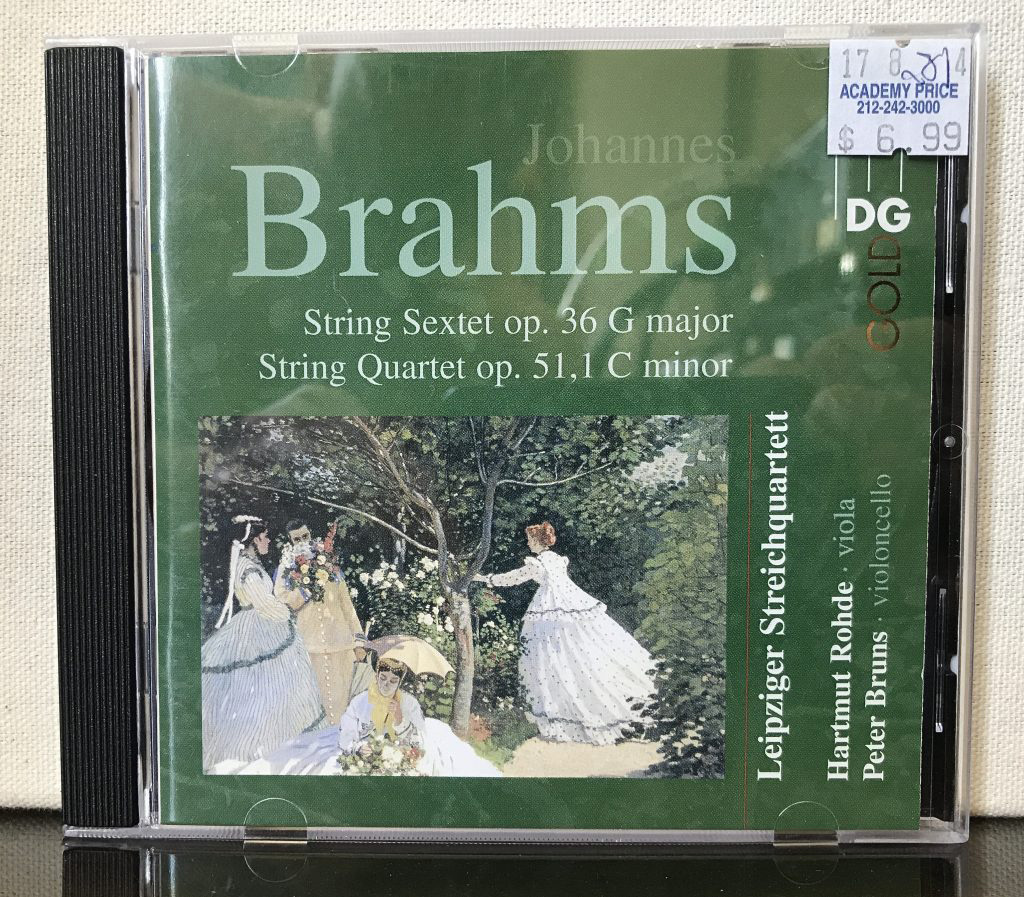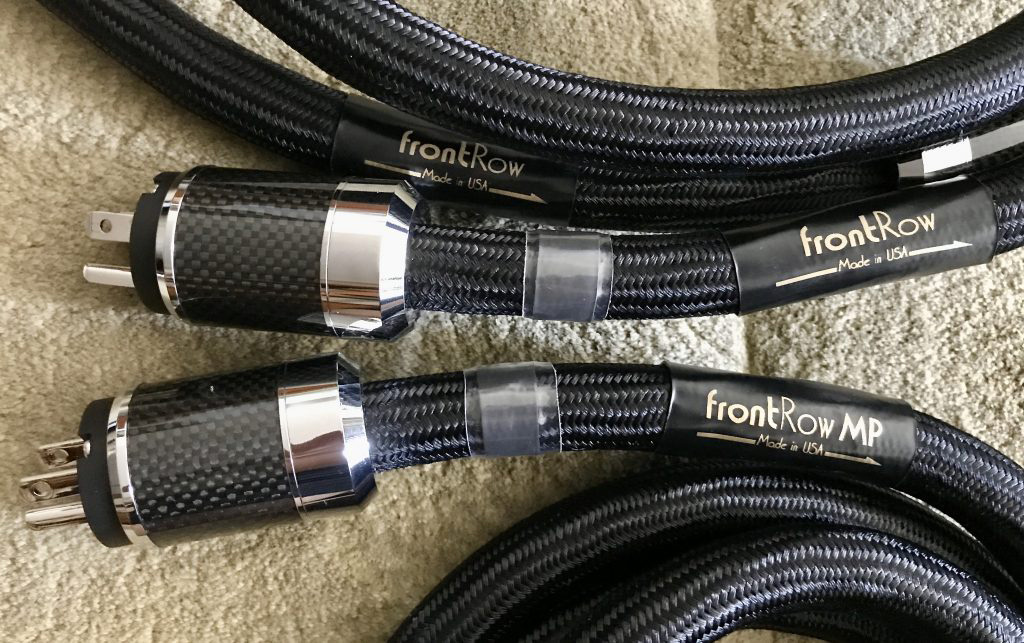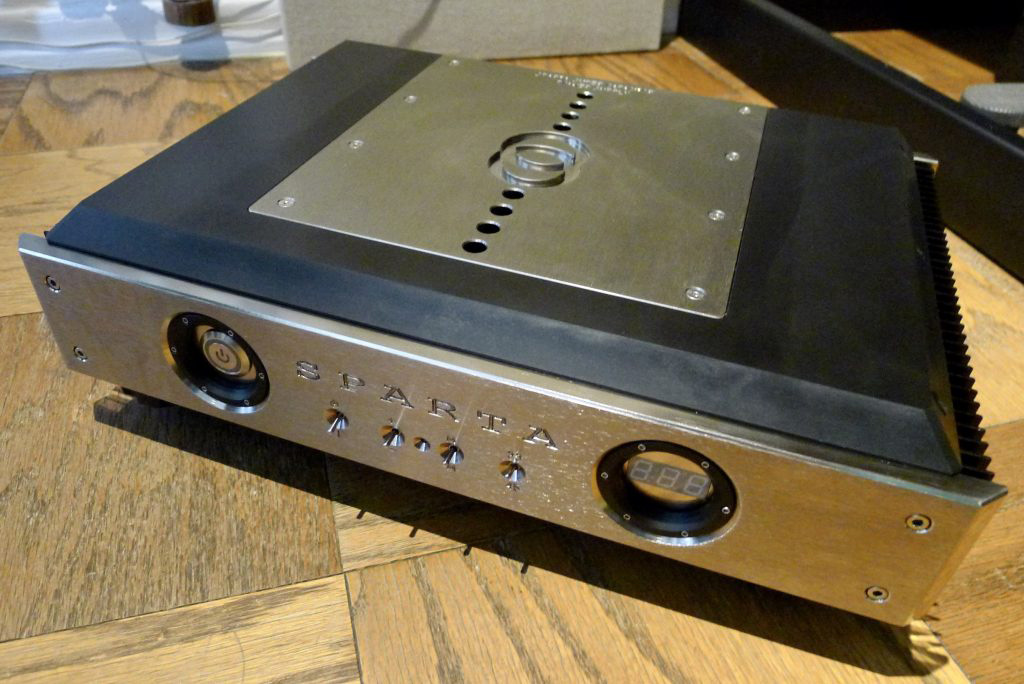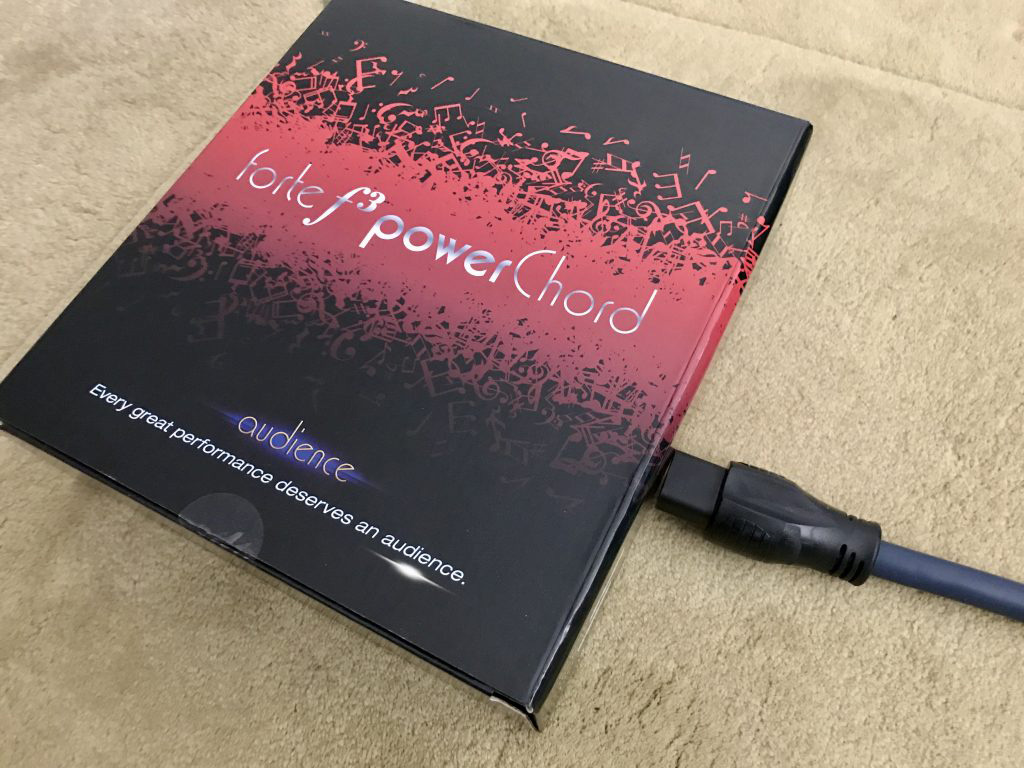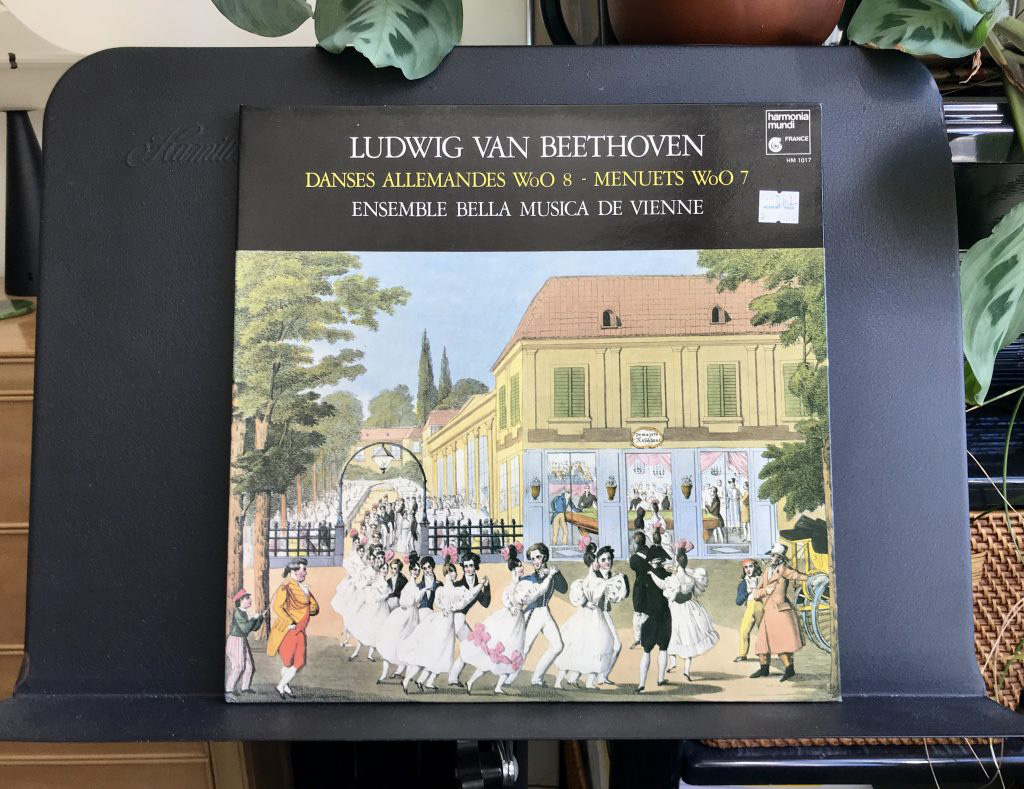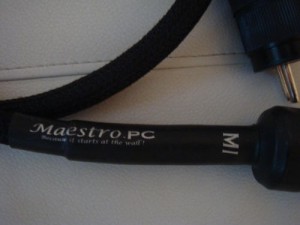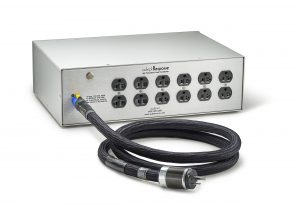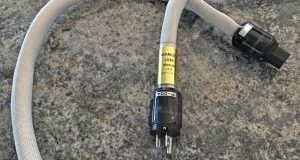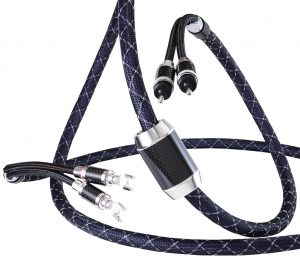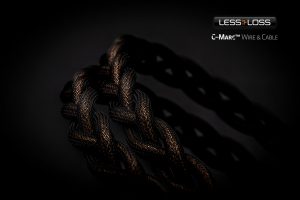One of the unsung perks of reviewing high-end gear is getting to travel without the discomfort of leaving home. When something new arrives, often even before the piece has settled in, I'll sit down for a taste and get the strong impression that the acoustic is unfamiliar, like maybe I've gone visiting another dude with a great system. Of course, the impression is limited to the overactive primary sensory organ of an audiophile; it's traveling without ever walking out the door, not literally get up and go. (Besides, nobody's doing much visiting these days anyway, due to the pandemic.)
An extreme example of devices that can alter our perception of the soundstage are the QVIBE and QKOIL (HERE), a pair of tweaks from Nordost that manipulate the signal in a way that your ear-brain interprets as a very large room, such as an auditorium, regardless of the one you happen to be in. I've encountered enough devices that do this that I've given it a name: the audio magic carpet ride. Does this sound like fun? Maybe you should check out them out.
I wasn't expecting anything so radical to transpire today. I'm auditioning the second round of power cord candidates for my amps. Round one was the wonderful AudioQuest Dragon PCs (HERE). The frontRow powerChords from Audience are in-line now. I wonder where I will be transported today?
the AQ Dragon and Audience frontRow
the New Room
On first impression, I did a double-take. There was so much in common between the frontRow and the Dragon PCs I checked to ensure that I had made the switch. Both sets of PCs had room-filling sound and threw stage dimensions of similar size and shape—good width but average depth, and not too different from my reference. Both had excellent tonal balances, neither light nor dark, and required very minor tweaking to move fully into my target zone. (Getting my reference system into the zone was no picnic.)
Each threw large images arrayed upon the stage in the exact place I expected them to be, and they were notable for full body and softly drawn outlines. Frequency integration and coherency were outstanding. Both PCs were wholly free of artifacts and went out of their way to avoid roughness, presenting a smooth, varnished soundstage surface with no sharp edges or burrs. The smooth surface and the soft outlines played down discrete imaging and created a holistic impression—neither would strike you as incisive or resolute.
frontRow Timbre
With all these commonalities this wasn't a new room. Still, the ear-feel told me something was fundamentally different and it had to do with the surface of the soundstage, the weave of the sonic cloth. Let me employ the analogy of premium bed linens. Think of the Dragons as a 900 thread count, tightly loomed bed sheet with the ultimate silky smooth feel. Now, for the frontRow, imagine yourself reclining on a 400 thread count sheet, not as luxurious, with a kind of nubby texture. Reverting back to audio, the Dragons took the complex structure of each note, rolled it into a dense ball of tone, and encased it in a smooth outer surface. Everything important is there, but you can't break it up into its parts. With the frontRow, the tone is similarly dense, but the nubby surface around it grants you a peak at the overtone structure and all its little nooks and crannies. Now, there's no doubt your skin relishes the silky caress of the smooth sheet; but your ear simply loves parsing that nubby texture.
It was a matter of presentation. Both PCs laid out the full frequency deck without shortchanging the complexity of the note. While the Dragons were paragons of neutrality—that's what impressed foremost—the frontRow strayed a couple of degrees from a strictly neutral position with a splash of timbral color and texture. They stopped well short of trespass into Hi-fi exaggeration but, let me tell you, the frontRow was so delightfully rich as to give one pause; Is this still a solid-state system I'm listening to?
The frontRow color and texture tends to be more forgiving of badly engineered recordings, allowing you to enjoy your whole collection, not just the audiophile selections.
frontRow Dynamics
It would be fair to say both cable brands feature excellent macro dynamics, but again the frontRow tweaks it with attacks that were a little faster, decays a little shorter, and low-end more abundant. The frontRow was agile on its feet, landing rapid, hard-hitting rabbit punches. When it let rip the big body blows—watch out! It was K-O time. Fast-moving, cresting macro wavefronts strike with extended range and outstanding thrust. This was top-drawer slam.
The frontRow low-end is big, round, tight—but not overly so—and nimble. It moved around like a dancer and was able to carry the tune. Truly, how often do you hear a pitch accurate, unamplified double bass solo in reproduction? You're lucky if you're able to pick out a note or two. So often bass solos are an undecipherable buzz.
Some wires impress with their abundant low-end—until you realize it's always there, even when the signal doesn't call for it. That's a fatal flaw at this level of play. The frontRow showed no hint of this coloration. With a chamber music piece like the Brahms String Sextet Opus 36, the lovely, midrange-centric playback initially caused me to think, "Where's da bass?" But as soon as I swapped in an orchestral CD, like the Beethoven Romance No. 2 for violin and orchestra, the full frequency deck rolled out including punchy, tuneful bass that caught my ear and brought a smile. Yes, tuneful: I ought to bold that word, because it's a notable feature of the frontRow.
A Problematic Installation
Each of my CH Precision M1.1 monoblocks takes two PCs: one with a 20 amp plug (which connects to the huge transformer and power supply that feeds the output devices); and one with a 15 amp plug (connected to the power supply that feeds the input devices, control circuitry and front panel display). Thus four frontRow HP powerChords were installed on the amps, while a fifth HP went from the wall to my HB Cable Design power distributor (which is dedicated to the amps).
This initial install didn't work out well. Even after sufficient burn-in, there was too much midrange and not enough treble; the heavy frequency response was unbalanced. Poking around online, I soon became aware of another version in the frontRow powerChord series simply called the MP, which sold for slightly less money. My antennae perked up—might this offer a solution? I conferred with John McDonald, the company CEO, who confirmed:
"Audience makes two versions of powerChords in the frontRow line. The standard is a 10 AWG high current model that is adequate for any audio component of 150 watts or greater. For components with less than 150 watts, like pre-amps, disc players, DACs and the like, there is a 13 AWG "MP" medium power version. In my personal experience, the MP version always sounds better than the heavier 10 gauge design in lower power components."
That fit my situation: since the CH M1.1 15 amp circuit uses less current, it did not need an HP cord. While I waited for a pair of MP powerChords, I took one of the freed up HP powerChords and put it on my CH D1 digital transport. Sure enough, I heard the same issues as when it was on my monoblocks' 15 amp circuit.
the frontRow HC & MC powerChord
The frontRow MP powerChords
The frontRow MP look the same as the HP version, the only way to tell is by the label. (The HP does not have a label.) The sound I described above was optimized with the MP on my monoblocks' 15 amp and HP on the 20 amp circuit. So this is something to keep in mind: the frontRow PCs are not one size fits all: use them in their intended applications.
When I had a chance, I repeated the experiment with a frontRow on my CH D1 digital transport, only this time it was an MP. This was very good. Dimensional cues clarified; the illusion of musicians in the room was stronger; there was more delicacy; at the same time, it was bigger and bolder. The single MP powerChord on the transport offered nearly as much bang as the suite of five frontRow on my amps.
the Kronos SSCPS
This next experiment might strike you as nuts. I put a frontRow HP on the Kronos SSCPS (Sparta Super Capacitor Power Supply for the Sparta turntable motor). I don't know, maybe it was because Louis Desjardins, the Kronos Audio designer and proprietor, always boasted the SSCPS was as powerful as a small amplifier. I figured I'd test that assertion.
Yeah, it was crazy—crazy like a fox. Injecting high-octane fuel sent dynamics through the roof. So much energy, so much less stress! Large, heavy images of great density hung on the stage like juicy plums, moving around of their own free will with completely independent action. The effect on LP playback was vitalizing; the effect on the listener was calming.
The forte F3 powerChord
The next time we spoke, I described what transpired with the Kronos SSCPS. Again, the momentary pause, then John replied, "I have a power cord for you to try." Soon I was auditioning the entry level forte F3 powerChord (MSRP $199, 1.75m).
The forte F3 powerChord is a high current 10 AWG design made with high purity stranded copper wire so it is flexible and user friendly.
I suppose it was the heavy gauge, high current design that suggested the forte F3 might do the trick. Would it make the SSCPS sing?
I put on a great sounding LP, Beethoven / Danses Allemandes (harmonia mundi HM1017). Well, the presumption was at least part right. The forte F3 did a good job in the areas of macro dynamics and frequency balance (it has lots of bass). However, falloff was evident in the areas of tone, timbre, spatial cues, and definition. (That's a relief, as it would be real cause for concern if there wasn't major differences.) Put it this way: I could no longer tell that I was playing a super disc LP. Still, the forte F3 had no obvious sins of commission and would be quite listenable in an appropriate system. That's saying something, because I've heard PCs at five times the price that aren't as good.
Cosmetics and Design
The frontRow powerChord is cosmetically like many other fine-looking power cords. The outer sheath is a black woven fabric; the plugs don't appear unusual. It is conventional in appearance, just heavier and stiffer, but don't be deceived. In fact, there's such a long list of new technology under the covers, Audience decided to bundle them under the umbrella acronym MORRE (Musically Optimized Reduction of Resistive Energy). John emailed the principal differences (edited):
The frontRow is built on our Au24 SX model and incorporates new technologies including: more complex shielding design; application of our UHVP; newly designed AC connectors; and application of RF filtering crystals.
What are UHVP and RF filtering crystals?
UHVP is our ultra-high voltage process, which is the application of upwards of 800,000 volts in a controlled proprietary manner. The filtering crystals is another proprietary formula of particular crystals that absorb RF interference and lower the noise floor.
Click here to read a white paper about MORE.
MSRP Compared
For comparison purposes, the revised package for three frontRow HP and two MP PCs came to $32,500. The AQ Dragon PC package summed to $45K. My reference setup, a mixed bag consisting of a humongous Stage III Proteus PC (MSRP $15,900/2m) from the wall to the power distributor, plus four K•S Elation! power cords (MSRP $2500/2m), tallies to $26K.
Conclusion
Quite out of character, you'll find me sporting a silly grin these days. I'm engaged in a project I have wanted to do for the longest time: rolling the power cords on my amps. My silly grin is because both rounds so far have seriously upped my game, and I'm not done yet—there's at least one more round coming up. The price point I'm looking at (MSRP between 6-9K/2m) is chock-a-block with exciting contenders. I knew I should have done this a long time ago!
The frontRow powerChords from Audience excel in every performance parameter you might deign to focus on, with particular distinction in two areas: timbres that bring a splash of exciting color and texture; and a low-end that is tuneful and dynamic as hell. They sound delicate and bold at the same time. Try as I might, there is nothing to quibble about their performance, let alone criticize.
The frontRow powerChords from Audience ascend to the power cord executive suite and deserve a seat at the chairman's table. Definitely a contender—they have proven themselves worthy.
frontRow High Power powerChord
Retail: $6700 6 ft (+/- $260 per ft.)
frontRow Medium Power powerChord
Retail: $6200 6 ft (+/- $240 per ft.)
forte F3 PowerChord
Retail: $199 1.75m
Audience AV




